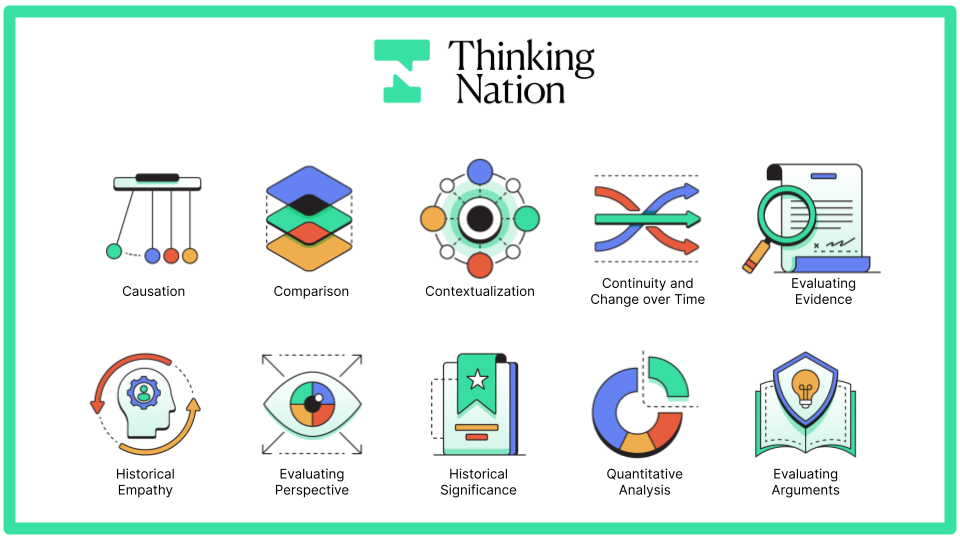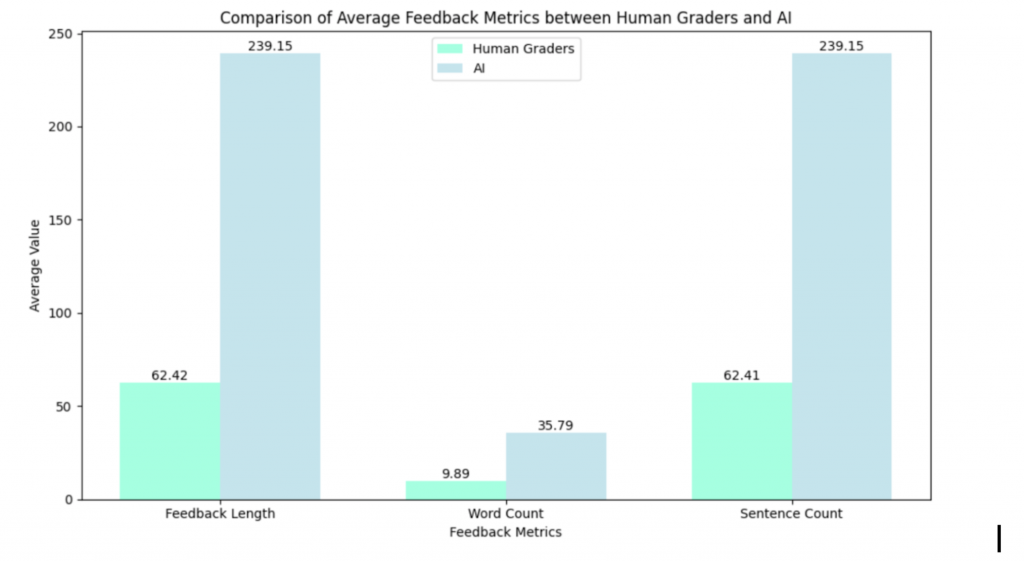In this week’s newsletter, we want to highlight the major platform updates we underwent over summer to ensure that our teachers have the best tools at their disposal. We are excited to share the latest updates, all aimed at simplifying the teaching workflow and enhancing students’ learning experience. Let’s dive into the key changes and improvements! (Also, if you want a video overview of the updates, go here!)
1. Resources Organized by Topic for Easy Navigation
We’ve reorganized the platform’s resources by topic. This change is aimed at making it easier for teachers to find and navigate through the platform. Now, everything you need is more accessible, helping you spend less time searching and more time teaching.
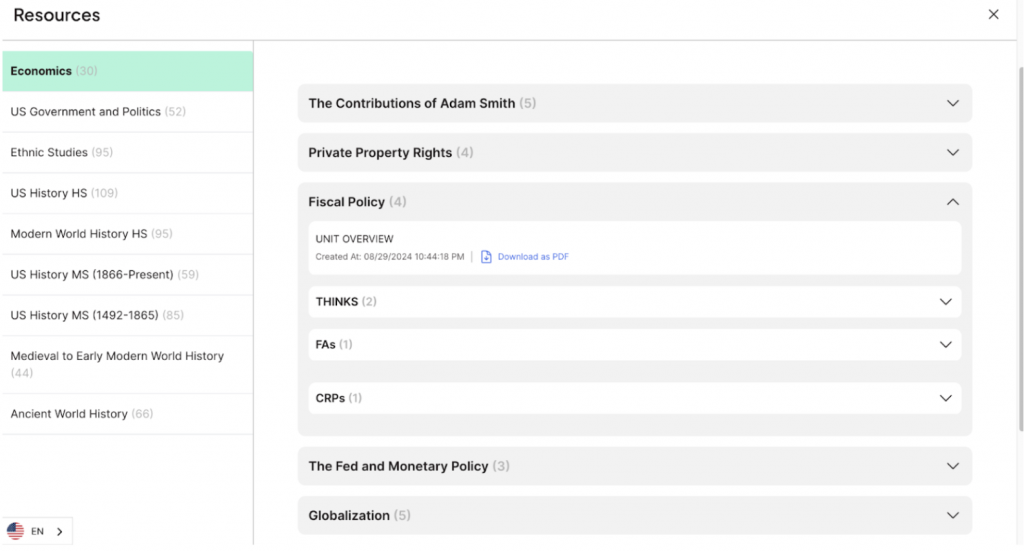
2. Select the Resources You Want to Assign
Our new filter option allows teachers to select exactly what they need. The filter ensures that teachers only see what they are looking for, making the assignment process faster and more tailored to the classroom’s needs.

3. A Unit Overview to Streamline Your Planning
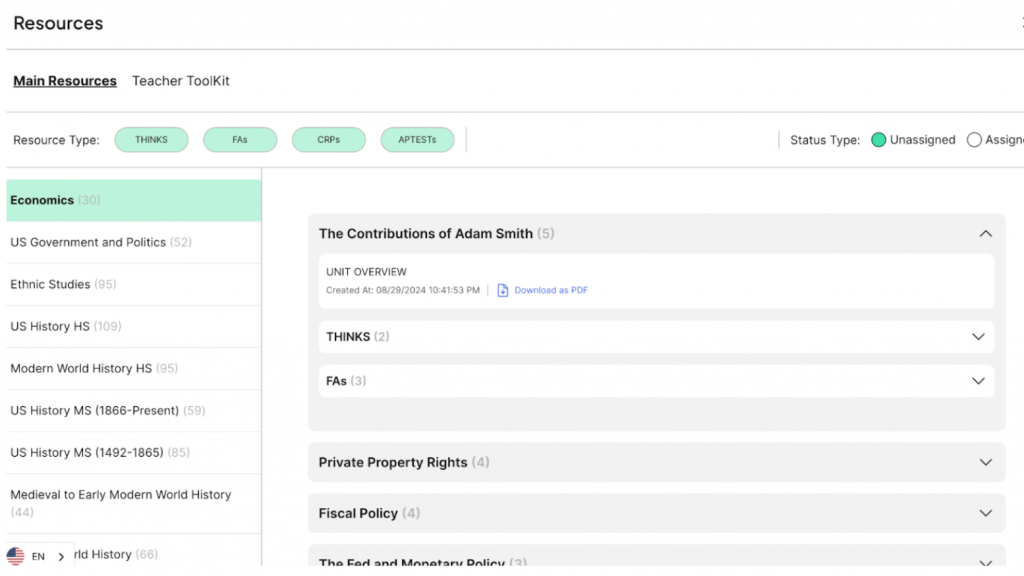
We’ve added a Unit Overview feature that serves two essential purposes. First, it provides a quick and easy view of all available resources for a specific topic. This feature helps maintain consistency in how resources are used, allowing teachers to see what’s available at a glance. Second, it demonstrates clear alignment to various educational standards. The Unit Overviews show alignment to Common Core, California, Texas, EAD, or C3 standards.
4. AI-Enhanced Formative Assessments
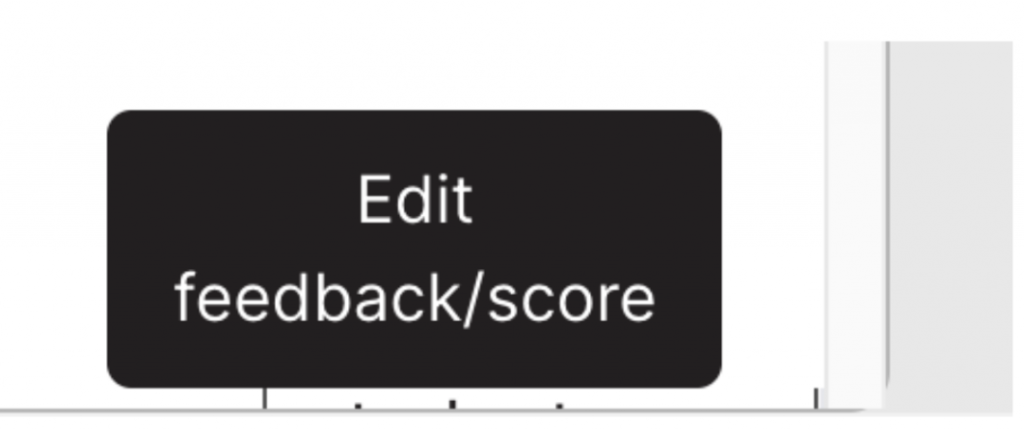
We’ve integrated AI-powered formative assessments to assist in grading short answers automatically. This new feature will grade responses based on our rubrics criterias, providing immediate feedback to teachers and students. Teachers still have full control over the assignments as they can edit scores and feedback at any point before releasing grades to students. The “edit feedback/score” button is at the bottom right corner of the page when viewing the AI-given feedback and score.
We hope these platform updates will improve teachers’ experience with the platform and help them kick off the 2024-25 school year with confidence and efficiency. (and check out this video summary of the updates)
